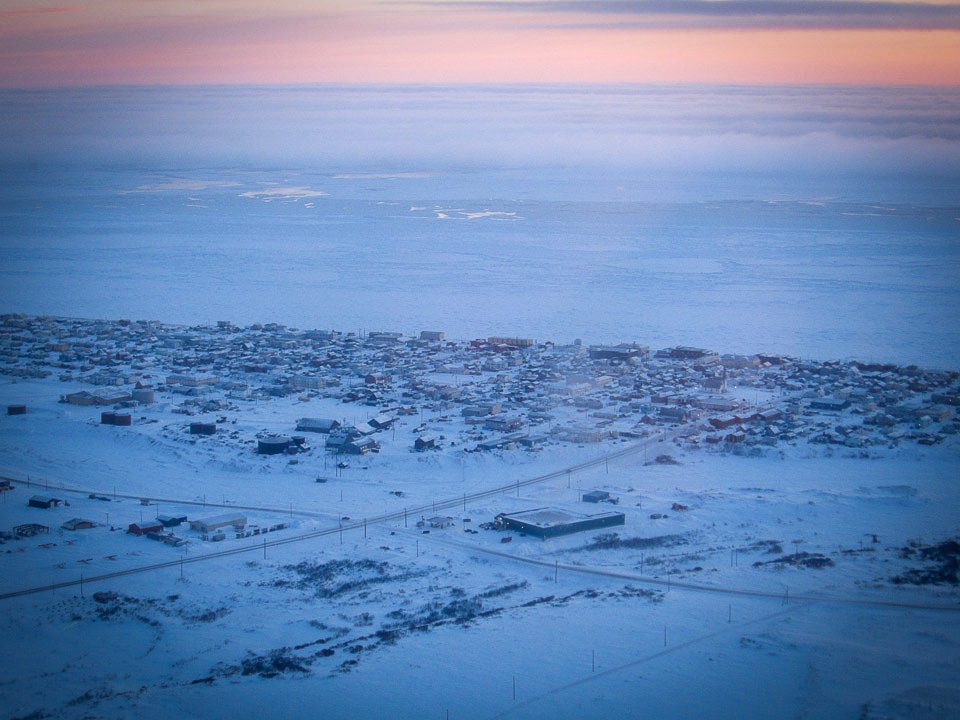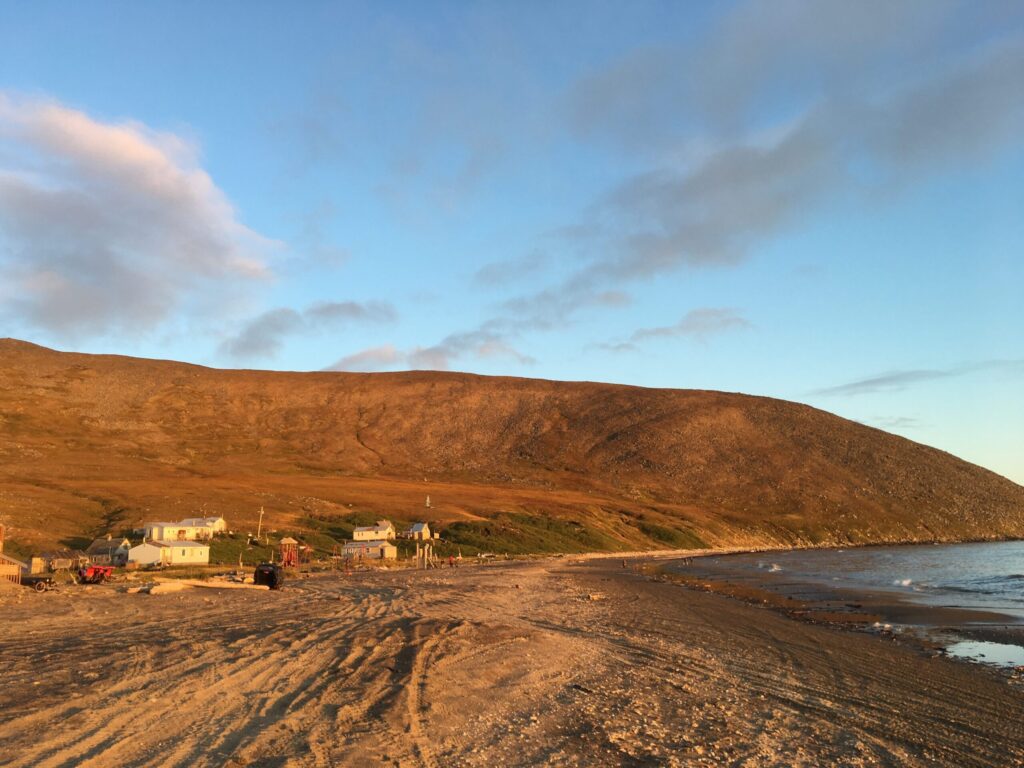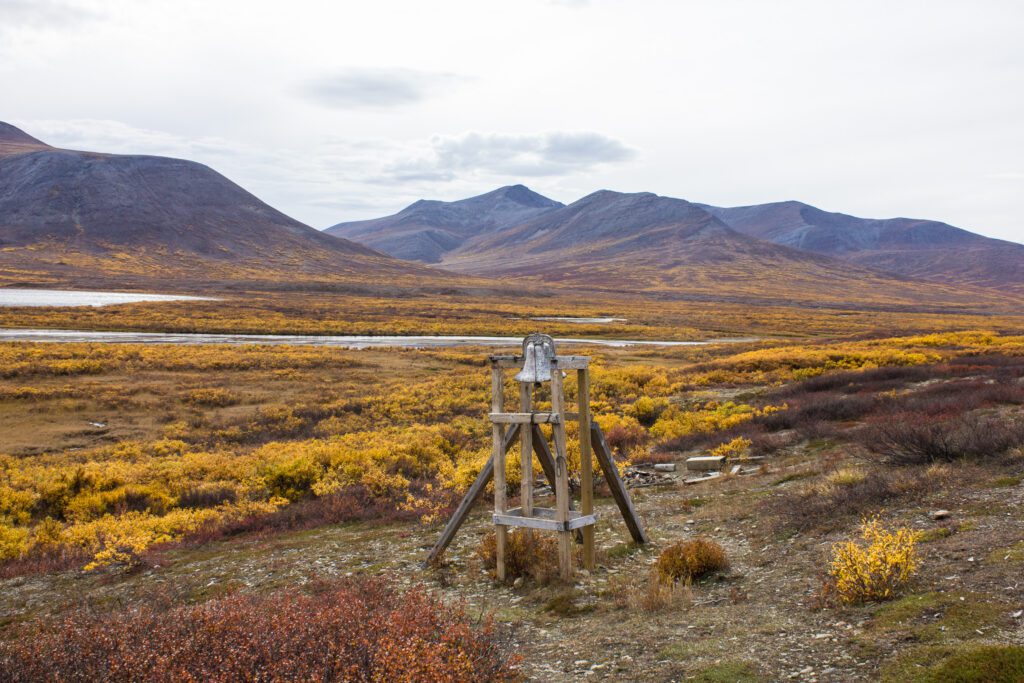It’s been an interesting week in the KNOM news room. The blog title kind of says it all: fires, miners, and polar bears.

First up, fires: I woke up to a phone call last Thursday morning, informing me that Teller—a nearby village, the only one accessible by road—was on fire. I was up, at the station, and on the road with my computer and recording gear in 10 minutes. I got to Teller, quickly spoke with some firemen (who had flown in from Nome, as Teller lacks its own fire department), and we went live on the air shortly after. I walked around still-smoldering debris and water-spewing hoses, just minutes after the fire was considered “contained.” I reported on the loader (or, in my pre-Nome dialect, the bulldozer) that exploded while fighting the fire, the three structures that burned down (and the other three vacant “tinderbox” buildings that were demolished), and the containment efforts to keep the fire from spreading to the community power plant and catholic church. I scrambled to find internet, so I could take the audio I had gathered, edit some cuts, and beam it to the station for a noon update. I found it at the Teller school (note to future volunteers: when in doubt, go to the village school. They always have a place to sleep, internet, and more), and furiously began editing and writing. My story completed and the cuts ready, I e-mailed it all to the station and went back out to the fire and gathered more info. My story aired at noon, and we did another live spot as the firefighters finished up, returned to Nome, and the Alaska State Troopers took over the scene.

Next up, miners: working for a still-in-development series of snapshots of the miners that are making Nome their home this summer. Not much to report on here yet—still a work in progress, this one—but it was interesting to meet an electrician from Hawaii mining for gold with his son on the same beach as a long-time Nome resident who, in a most humble and almost parochial way, sits on a plastic beach chair each day with some mining gear, pulling cash out of the sand. Some of these guys have been on those reality shows about gold mining—I’ve never seen any of them, to be honest—but they’re all friendly and willing to chat with random guy who sticks a microphone in their face.
And finally, polar bears (oh my!): I flew to Shismaref Friday to report on the Alaska Nanuuq Commission and the US Fish & Wildlife Service, who are traveling to communities throughout the Bering Strait to talk about a new, international quota on subsistence polar bear hunting. Where else can you report on legal polar bear hunting? I learned that there are quite a few separate populations of the polar bears in the world. The Chukchi Sea/Bering Sea population is one—a healthy population that also happens to produce the largest polar bears on earth—but there are other populations in circumpolar regions around the globe. Subsistence hunting has proven to be manageable elsewhere in Alaska: in the southern Beaufort Sea, along the north coast of eastern Alaska and western Canada, where that polar bear population has been the subject of a voluntary quota system between Canada and Alaskan communities like Barrow and Wainwright. That quota has allowed for a sustainable polar bear harvest since 1988. The new quota won’t effect Alaskan hunters too much; their annual harvest already hovers around the proposed quota. But the quota will really change things on the other side of the Bering Strait, in Chukotka, where subsistence users will be allowed to legally take polar bears for the first time since the Soviet Union banned their hunting in 1956. Not exactly the Berlin Wall here, but it’s still cool to report on changes that are even tangentially related to the USSR.
So, fires, miners, and polar bears: oh my, indeed. Things are always interesting in the KNOM news room.







